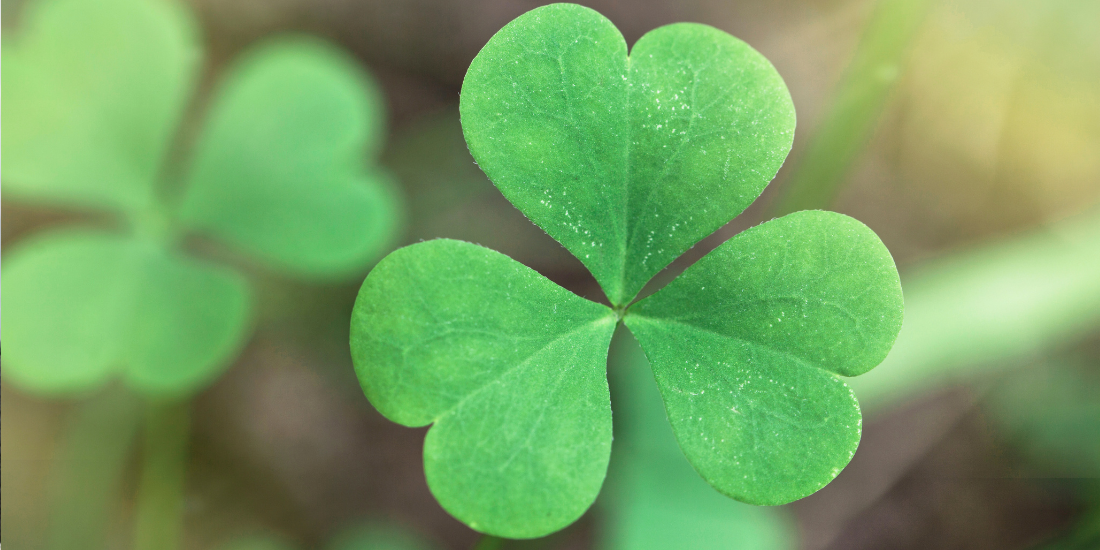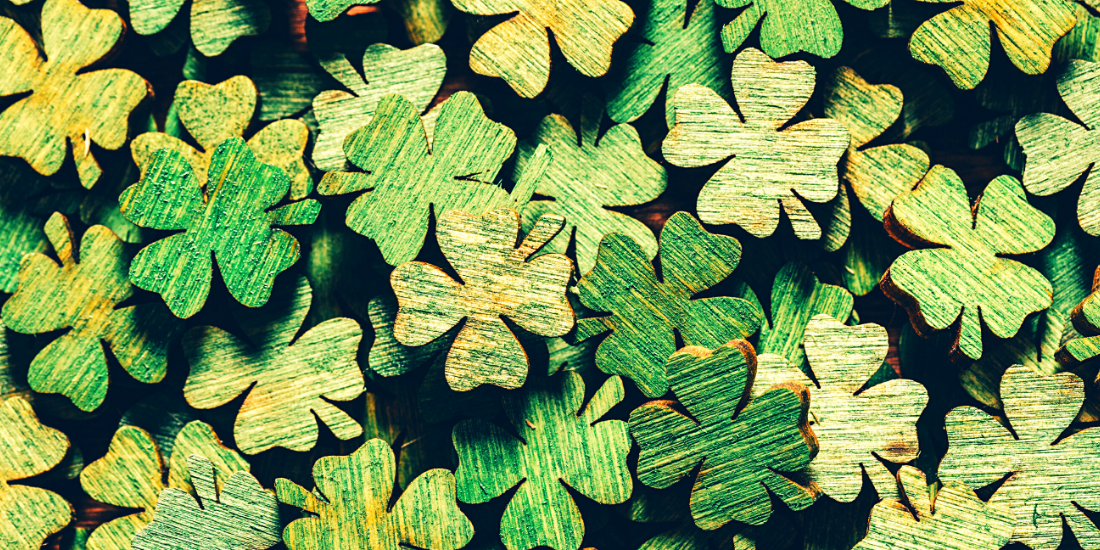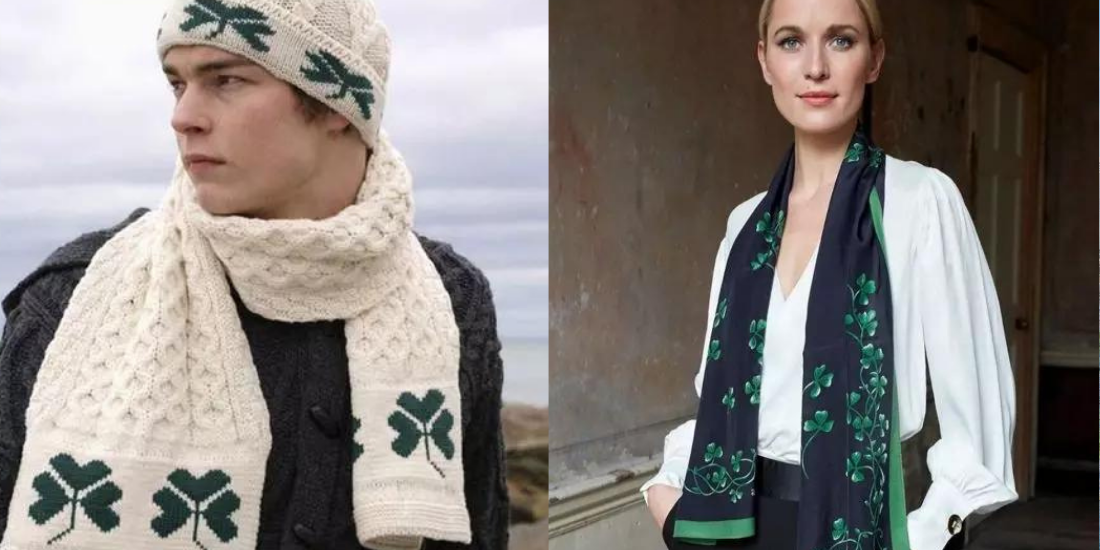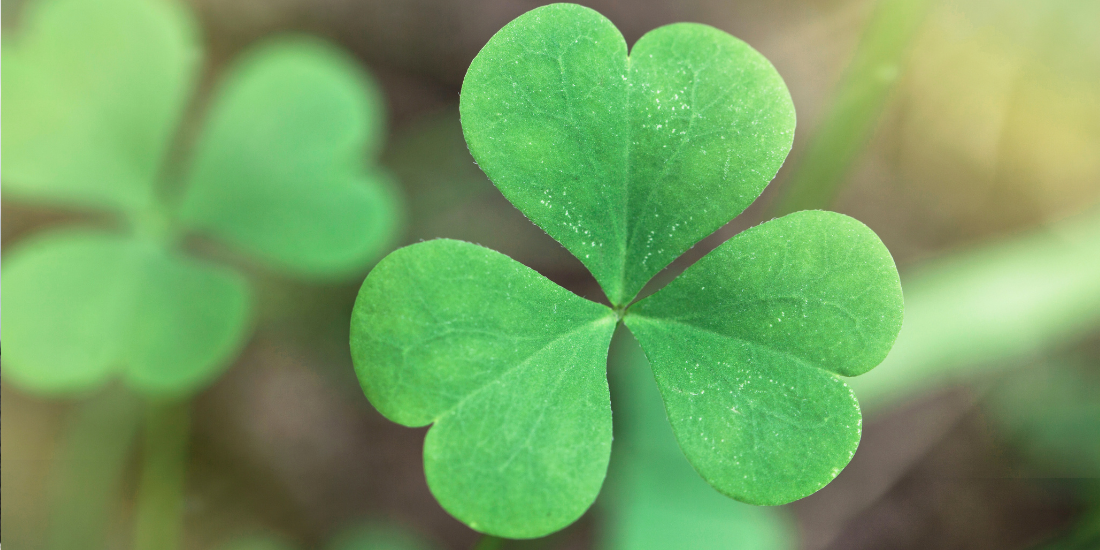
Understanding the Shamrock / Clover - Ireland's National Symbol
It’s undeniable that when we think of Ireland’s common symbolisms, we all picture a shamrock. But where did the symbolism originate, and how has such a plant become an iconic national symbol?
What is the Meaning of the Shamrock and What is its History?
Biologically-speaking a shamrock is a young sprig, the name meaning "young clover." Shamrocks are a type of clover, though botanists and the public are divided on which specific type.
Not to be confused with the four-leaf clover we know to be lucky, the shamrock has three leaves, a feature that led to its iconic status as the symbol for Ireland. Known worldwide, many people do not know the meaning of the shamrock, how it came to be associated with Ireland, or why it is featured on so many objects and clothes.
Though clovers are found all over Europe and the shamrock isn't a unique species to Ireland, it has morphed into an emblematic symbol loved by the Irish and Irish diaspora.
The Origin of the Shamrock
The origin of the shamrock is entangled with the history of Saint Patrick. Now known as the patron saint of Ireland, he wasn't actually Irish. Born in Roman Britain, he lived in the fifth century and arrived in Ireland as a slave captured by pirates.
During his captivity he converted to Christianity and, once freed, eventually left Ireland to study in Britain and France. After his time there gathering knowledge and faith of Christianity, he returned to Ireland as a missionary to convert and baptise the pagan Irish.
In his work as a missionary, it is told that Saint Patrick used a shamrock. He used it as a metaphor to explain the Holy Trinity - where the three leaves represented God, Jesus and the Holy Spirit.
Since its use by Saint Patrick, the shamrock has been associated with Ireland. From the 18th century it became ingrained as the symbol of Ireland, much like the rose was associated with England, the thistle was associated with Scotland, and the daffodil was a symbol for Wales.
St. Patrick's Day and the Commercialisation of the Shamrock
For St. Patrick's Day, no other symbol stands above the shamrock. Falling on March 17, the holiday began centuries ago as the feast day of St. Patrick, and has now become a day where people around the world pile on shamrock gear and celebrate their Irish heritage, or pretend to be Irish as the Irish take over the world for a day!
In recent times, companies have jumped aboard with the celebration bandwagon. For example, the introduction of McDonald's ''shamrock shake''. The holiday is inherently Irish, but, interestingly, it was the United States who largely contributed to the global popularity of the festival.
The shamrock's importance and iconicity converged with the religious celebration of the historic Saint's feast day, now known as St. Patrick’s Day. Historically, poverty-stricken church patrons would pin shamrocks to their clothing for the feast in an attempt to look nice.
With each passing year, the tradition of wearing a shamrock to the event continued to catch on and was a tradition widely adopted by Irish churchgoers. The origin of the shamrock as an Irish symbol began here.
St. Patrick's Day became popular in the United States in the eighteenth century. The holiday's commercialisation followed a century later, and the popularity of the shamrock boomed when Hallmark chose to feature it on cards celebrating the holiday. The shamrock is still the most popular symbol used in St. Patrick's Day paraphernalia in modern times and is often paired with the colour green.
With the plant established as an Irish symbol and with the success of its marketing in the United States, Irish brands also caught on and used the shamrock even more; even Irish companies altered their marketing to make sure they incorporated it into their branding. It was clear the shamrock wasn't going anywhere.
Though the shamrock was initially a symbol full of religious meaning, the way in which we regard the plant shows the meaning of the shamrock has lost its religious roots. Despite this, the shamrock will continue to live on as a national icon, and the value of the shamrock is evidently not going anywhere.
Shamrocks have become one of the most recognisable national symbols in the world and have gone on to be celebrated in traditional Irish art, music, textiles, and architecture.

Where Else is the Shamrock Symbol Used?
Over time, the use of the shamrock shifted from political to aesthetic expression. In modern times the shamrock has been used in a multitude of places.
Military Use
Shamrocks have been used as a symbol of Ireland in the military, with the icon being featured on militia flags and insignia. The shamrock evolved from a religious to political and military symbol in the late eighteenth century during a time of turbulent political climate and was seen during the American Revolutionary War.
The shamrock is also featured in the Royal Coat of Arms of the United Kingdom to symbolise Ireland's involvement. It is depicted alongside England’s rose and Scotland's thistle, and it is featured on coins and public buildings such as Buckingham Palace.
Arts and Festivals
The shamrock has been increasingly used aesthetically throughout the nineteenth and twentieth centuries. Makers of fine glass and china have incorporated the symbol into their works, weave designs have included shamrocks, and the symbol is heavily used in festivals and celebrations unique to Ireland.
Shamrock Clothing
One of the most popular ways to celebrate Irish heritage is to wear clothing featuring the shamrock. Through recent times, shamrocks have appeared on clothing garments and are worn with pride and adoration.
Clothing depicting the Irish symbol is extremely popular, and you can find garments of the best quality and design within our unique shamrock-themed gifting collections. Given our passion for Irish craft and culture, we have several items to help you show off your Irish pride!
Aran Shamrock Scarf Merino Wool - unisex
Made of 100% Merino wool and made in Ireland, this natural Aran soft scarf features beautiful shamrock patterns and is sure to keep you warm.
Cream Round Neck Ireland Kids Sweater
This cream knitted sweater, which also comes in black, features a vibrant green shamrock on the front with ''Ireland'' embroidered down the side. It is the perfect choice to keep your child warm.
Shamrock Sprig Silk Scarf
This shamrock silk scarf will be an elegant and classy addition to your wardrobe. It features Irish shamrock sprigs on a luxurious silk fabric that can accent your outfit any time of year.

Celebrate Irish Heritage in Style
The history and origin of the shamrock is captivating, we’re sure you’ll agree if you’ve made it this far! The truly iconic symbol is deeply ingrained in Irish culture and has become a recognisable symbol of Ireland the world around.
Much like the triskelion, over the years, the shamrock has been depicted in many ways and forms and with a dedication to keeping this wonderful tradition alive, we’re here to bring you quality shamrock garments to celebrate your proud Irish heritage with a touch of class!









